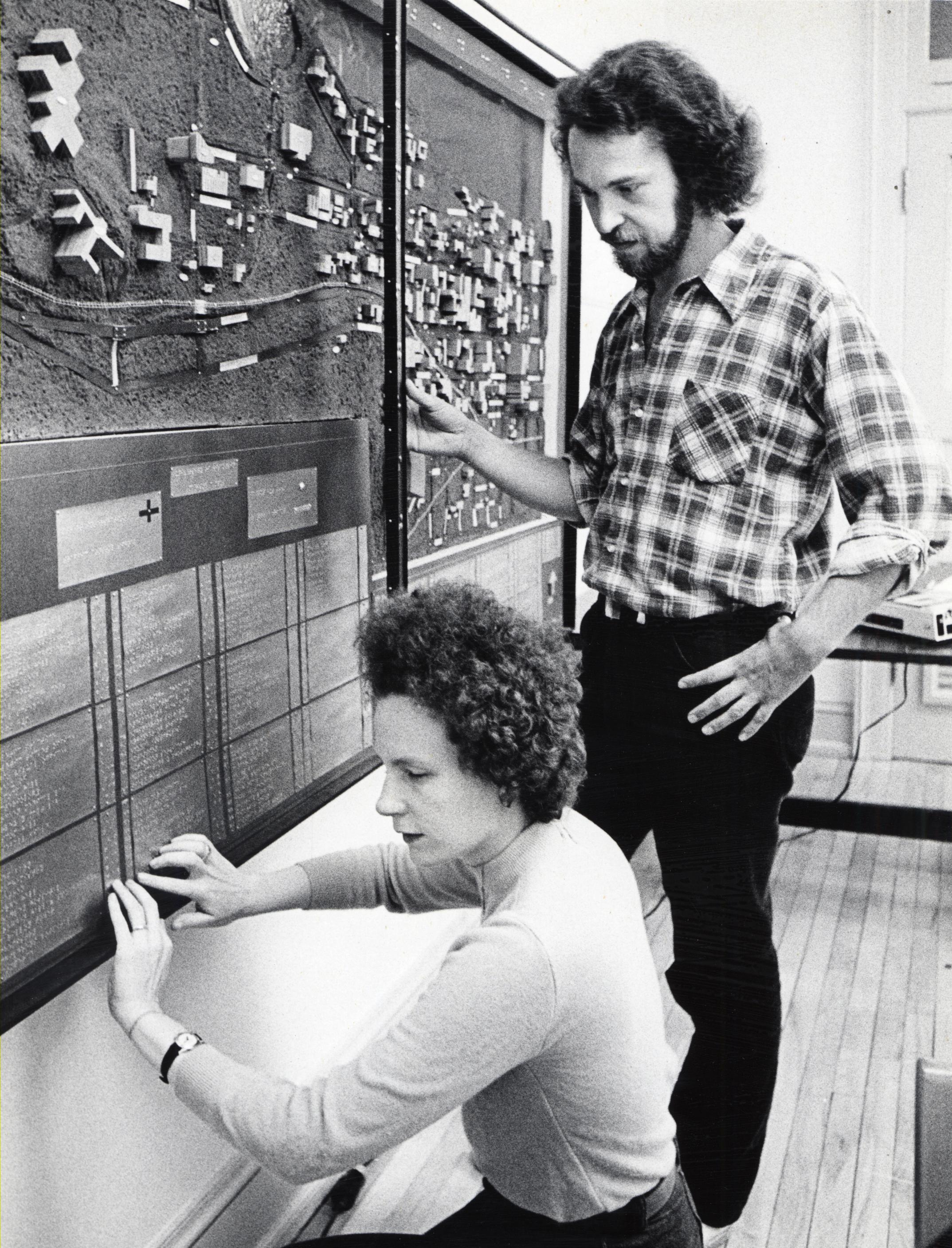Greetings from the Public History Project! July is Disability Pride Month, so for this edition of the newsletter, we’re highlighting history surrounding the fight for accessibility at UW–Madison and the experiences of campus community members with disabilities. We’ve got links to project research, reams of archival material, new book and movie recommendations, and more!
The University of Wisconsin-Madison’s Public History Project is a multi-year effort to uncover and give voice to those who experienced, challenged, and overcame prejudice on campus. As always, if you have a story to share, an event you think should be researched, or a person you think has been overlooked, please email us at publichistoryproject@wisc.edu.
|
|
|
|
|
|
“I’d like to take my place among you as your classmate,” UW law student Brigid McGuire announced to her civil procedure class on September 7, 1994, before revving up her circular power saw and cutting off a portion of her desk to make room for her motorized wheelchair. Amid applause, she added, “My hope for this action today is for this law school to get a carpenter in here and do the right thing.”
The attention-grabbing act was just part of McGuire’s years-long effort to make learning more accessible at UW–Madison. Read more in this PHP post by researcher Emma Wathen.
|

|
|
|
|
A newspaper clipping from the Wisconsin State Journal on Sept. 9, 1994 begins: “A wheelchair-bound UW–Madison law student, Brigid McGuire, uses a power saw to cut off part of a desk to protest a need for greater classroom accessibility. McGuire may face disciplinary action, an administrator said Thursday.
|
|
|
|
|
|
Meet one of the Project’s contributing researchers — John Walker! John is a third year graduate student in the iSchool at UW–Madison. He hails from Jessamine County, Kentucky and loves to talk about the history and culture of his home state.
He graduated with a B.A. in journalism and anthropology from Murray State University in 2012, and had stints as a newspaper reporter and radio producer before taking time to travel and live on multiple continents.
|
|
|
|
In the iSchool, he’s focusing on material histories, preservation and works with the Tribal Libraries, Archives and Museums (TLAM). At the PHP he’s helping us create an online index for the archival knowledge we have gathered since the beginning of the Project. Once completed his work will be an online space for researchers and the wider university community.
|
|
|
|
|
|
Normally we use this space to highlight an interesting find from our archival work, but this month we have a whole dang collection to share!
The McBurney Disability Resource Center records cover more than four decades of campus history, including newspaper clippings, letters, photos and event flyers and ads that have been incredibly valuable to the Public History Project’s research into the experiences of students, faculty and staff with disabilities.
The physical collection — some 28 cubic feet — is housed in the UW Archives, with some materials available to view digitally.
|

|
A student reads the guide to a three-dimensional wall map of the UW campus at the McBurney Resource Center in 1977. UW Archives
|
|
|
|
2020 marked 30 years since the passage of the Americans with Disabilities Act, the landmark federal legislation barring discrimination based on disability.
To celebrate the anniversary, the Public History Project partnered with the McBurney Disability Resource Center and student organization to host a talk exploring the history of disability at UW–Madison, both before and after passage of the law.
|
|
|
|
What does it mean to be disabled in America?
Each month, we like to share one of the many (many… many… ) books that have helped the Public History Project’s research. And for July, we have a pick that takes on that big question.
Kim Nielsen’s A Disability History of the United States covers the entirety of U.S. history from pre-1492 to the present, placing the experiences of disabled people at the center of the American narrative.
Drawing extensively from primary sources, the author argues that to understand disability history isn’t to narrowly focus on a series of individual triumphs but rather to examine mass movements and pivotal daily events through the lens of varied experiences.
|
|
|
|
We get asked a lot of questions about UW history. Each month we’ll answer one in the newsletter. This month: What was the first student organization on campus for students with disabilities?
The answer: In 1967, a group of wheelchair-using students and their faculty advisor, real estate professor James Graaskamp, founded the Handicapped Students Association (HSA). It was later renamed Pathways to Independence.
In the association’s mission statement, the students defined themselves as “a group of individuals who are interested in finding solutions to problems encountered by the physically disabled students on campus.” Today, multiple organizations exist for students with disabilities.
Got a question? Email us uwpublichistoryproject@wisc.edu.
|
|
|
|
|
|
Each month the Project's Director, Kacie Lucchini Butcher will share a book, podcast, movie, quote, or something else she think has been adding to the PHP. We're calling it "From The Desk of KLB"
This month from the desk of KLB — Crip Camp: A Disability Revolution. The award-winning documentary tells the story of a 1970’s Catskills summer camp for teens with disabilities that not only provided campers with community and liberation, but also helped galvanize a generation of disability activism.
|
|
|
|
As always, if you have a story to share, an event you think should be researched, or a person you think has been overlooked, please email us at publichistoryproject@wisc.edu.
|
|
|
|
|